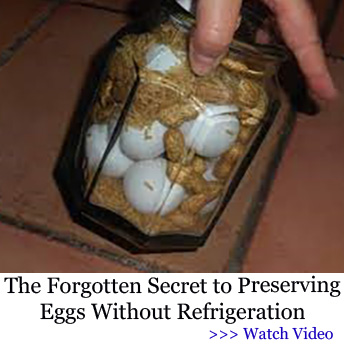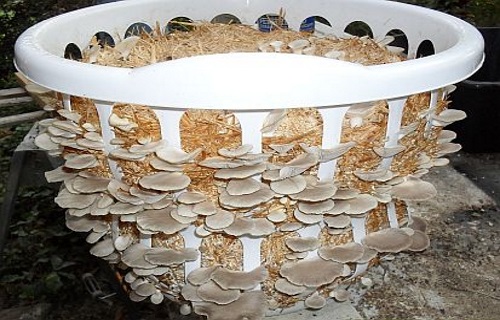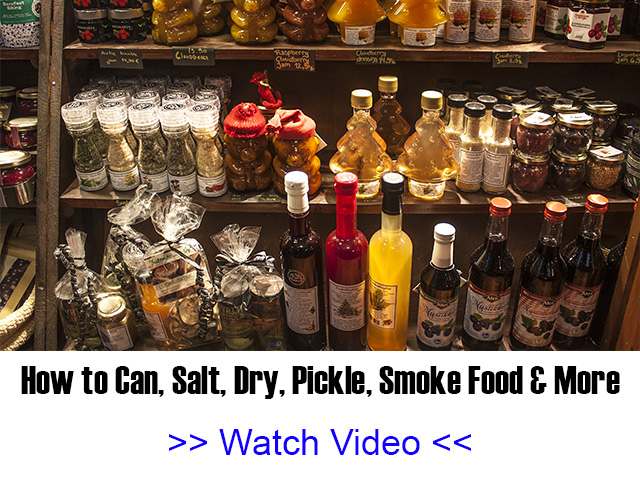I find myself engaging in conversation in various social circles, I often bring up the topic of foraging and eating wild plants and how this survival skill is being forgotten. Oftentimes, the topic of harvesting and eating wild mushrooms is the one that captures the attention of the room.
Those that never experienced more than the store-bought mushrooms show signs of skepticism, and their attitude toward foraging suddenly changes. I often wondered why this general fear of wild mushrooms, and after doing a little bit of research, I found out why.
It turns out that in the United States, there are more than 7.000 annual cases recorded of exposure to toxic mushrooms. This means that people get in contact with various types of mushrooms, intentionally or unintentionally, and due to the toxic nature of these mushrooms, they make the statistics. Luckily, the number of cases that result in major harm or prove to be fatal is quite low, less than 40 people per year.
If you are the type of person willing to give mushroom foraging a try, you will be rewarded with a tasty, nutritional reward. In fact, mushrooms have much more protein than most vegetables, and they hold high levels of vitamins. Also, few people know that mushrooms are the only non-animal food with a vitamin D content.
Besides being a good food source, mushrooms may also have some medicinal properties, and their anticancer, antiallergenic, antioxidant, antiviral, and antibacterial properties are being tested by various scientific communities all over the world.
According to the International Journal of Microbiology, there are between 5,000 and 10,000 species of mushrooms in North America alone, so foraging for edible mushrooms can become quite challenging for the novice forager. To put things in perspective, you should know that of these 10,000 species native to North America, about 100 are considered edible and safe for human consumption.
I often like to joke with friends that all mushrooms are edible once, but you should never test this theory, no matter how hungry you are, if you get stranded in the wilderness. There are other less risky alternatives when it comes to wild edibles, and you shouldn’t consume mushrooms unless you are certain you’ve identified an edible variety.
If you want to become a mushroom hunter, I recommend learning just one or two edible mushroom species each year. After you can identify the two varieties beyond a shadow of a doubt, you can expand your knowledge to other fungi.
For your foraging trip, you should bring along a sharp knife, a few mesh bags to store and transport the mushrooms, a good camera, and one or two field guides. The mesh bags will allow for the mushroom spores to be dispersed as you walk, so make sure you’re using only those types of bags for carrying the harvest. Regarding the field guides, these are useful not only to help you identify the mushrooms but also associated trees.
The camera (which can be the one from your phone) will help you take pictures and post them on certain apps like iNaturalist or on social media, where multiple people and various experts can offer input on the mushrooms you’ve discovered. There are also various Facebook groups dedicated to foragers, and just posting a picture on such groups of a mushroom you’re not certain about will provide you with useful information from other, more experienced foragers.
When taking photos of the mushrooms, make sure you take pictures from above but also from the underneath part of the mushroom’s cap, as well as the stalk. Some species can be distinguished by the presence of pores, gills, or other spore structures.
Another trick you can use to identify mushrooms is to make a spore print and post it online. Take the mushroom cap and put it on a sheet of paper with the spore side down (belly), pour a few drops of water on the cap, and then cover it with a glass for a few hours. You will notice that a spore print of various colors and arrangements will appear on the paper after you remove the mushroom cap.
Another piece of advice I can give you is to join a local mushroom club since no matter how many guides you read or bring along, it fails in comparison to finding and seeing the mushroom in their natural environment along someone who knows how to hunt for mushrooms.
These clubs will often organize and conduct forays where people will learn how to find and identify various types of mushrooms in person. Chances are you will be standing shoulder-to-shoulder with an expert, so make sure you ask questions and bring him/her the mushrooms you find to learn more about them.
Mushrooms are a type of fungus, and unlike most garden vegetables, they grow in composted substrate rather than soil. Straw and hay bales are commonly used as the bulk ingredients in mushroom substrate because they are inexpensive and easy to use. With the right preparation, the average gardener can grow his own mushrooms at home using sterilized hay bales.
Shiitake and oyster mushrooms are the most common mushrooms grown at home, though there are many edible and medicinal species that can be cultivated. Plug, sawdust, or grain spawns cultured with a specific mushroom mycelium are available from mushroom suppliers throughout the country. Once the freshly-cut log is inoculated with the mushroom spawn, patience is the next step. Shiitake takes about a year to begin fruiting; the aggressive oyster mushroom can produce in as little as 3-4 months. Oak logs can produce shiitake for 3 or 4 years, with rest periods in between flushes.
Poplar is commonly used for oyster mushroom production, and being a softer wood, is consumed more quickly by the mushroom, but may still last 2 or 3 years. Logs need watering or soaking in the hot summer months, but can produce mushrooms until the wood disintegrates. Log-grown mushrooms can get very large compared to their commercially produced, store-bought cousins. What reward it is to step outside and pick a 6-inch shiitake for dinner!
Mushrooms can grow in a few different substrates from logs and mulch to straw. In this episode of From the Ground Up we discuss starting mushrooms in straw. The benefit of straw (or mulch) is that you get mushrooms in the same season you plant, with logs you have to wait a year.
Mushroom Club members have also been introduced to alternative methods of mushroom production. Species can be grown on hay bales, straw, sterilized grain, shredded paper, egg cartons, phone books, fabric or many other media inoculated with spawn. These methods generally begin production more quickly but don’t last nearly as long as mushrooms grown on logs.
1 Sterilize the hay bales by placing them in a roasting pan or large stock pot full of boiling water until they are fully saturated. To make this process easier, it is best to use mini hay bales measuring no more than 12 inches in length.
2 Remove the bales from the water using a large pair of tongs and place them on a cooling rack set above a metal sheet pan to drain. You may need to empty the sheet pan several times so it does not overflow. Wait for the hay bales to cool to room temperature before removing them from the cooling rack.
3 Set the mini hay bales in the desired location for growing your mushrooms. Select a location that is out of direct sunlight and, if possible, will retain a stable temperature between 55 and 65 degrees Fahrenheit. You can place your bales directly on the ground or on top of a bench or table for greater comfort in caring for your mushrooms.
4 Create openings in the tops of the mini hay bales with your fingers.
5 Insert the oyster mushroom spawn into the openings you just created in the hay bales. Follow the instructions included with the mushroom spawn to determine the proper application rate.
6 Water the hay bales liberally with de-chlorinated water to keep the bales moist as the mushrooms develop. You can either purchase distilled or filtered water for your mushrooms or treat regular tap water with a de-chlorinating solution.
7 Check your hay bales several times a week and water them as necessary to keep the hay damp but not wet. After six to eight weeks, you should begin to see small mushrooms forming on the bales.
Now comes the fun part. The mushrooms essentially double in size every day, so within a week or so you should have good-sized oyster mushrooms. Mist them with water two or three times a day over this period – again, not so they are dripping, just so they are moist. The mushrooms should be harvested while their rims are still curled over a little and pointing downwards. If their rims seem to be turning upward, it’s probably time to harvest.
8 Harvest your mushrooms in the small “button” stage or let them mature for a while before picking them. Separate the mushrooms from the hay bale by gently twisting rather than pulling on them to avoid breaking the stems.
To harvest the mushrooms give them a twist at the base. This ensures that you leave the very bottom of the mushroom still in the bag. You want to leave that part behind as it is needed for the subsequent flushes of mushrooms. If you keep the mushrooms moist and in suitable conditions, you should get three or four flushes of mushrooms, although I’m told the first and second flushes are the most productive. I’m currently harvesting my second flush. When your bags stop producing, the straw can be used as mulch for the garden.
Preserving mushrooms
Mushrooms are a very valuable food in every kitchen, as they offer endless possibilities when it comes to using them. However, mushrooms are quite delicate and they require special care to preserve them from spoiling. Therefore, if you want to keep mushrooms in top condition for long periods of time, you’ll need to use a food preservation technique like dehydration, freezing, fermenting or vacuum packaging.
There are various different methods for preserving mushrooms. Mushrooms are being preserved in order to extend their shelf life. Fresh mushrooms only keep for about five days after picking. Preserved mushrooms can be kept for a longer period of time (even up to five years!)
Preserving mushrooms – freezing. Both wild and commercial mushrooms can be safely frozen, as long as they are edible. Choose mushrooms free from spots and decay. Sort according to size. Wash thoroughly in cold water. Trim off ends of stems. If mushrooms are larger than 1 inch across, slice them or cut them into quarters. Heating is required to preserve mushrooms ‘at their best.’ Either steam or saute mushrooms prior to freezing. Delicate mushrooms such as morels will benefit from a light saute prior to freezing.
Preserving mushrooms – drying.
For supreme flavor, try drying mushrooms. Not only is this the easiest way to preserve mushrooms, it also provides you with a real flavor treat. Mushrooms should be dried on a dehydrator, not out-of-doors. Either commercial or edible wild mushrooms can be safely dried. Choose mushrooms free of dirt and decay. Rinse gently and dry. Slice into sections for even drying. Place on a dehydrator tray or rack and dry until brittle or crisp. Mushroom ‘chips’ are a real taste treat. For a flavor boost, dry mushrooms and grind to a fine powder. Spoon the powder into soups and stews, or add to dough when making fresh pasta.
Dehydrating mushrooms in the air: either on a rack or by hanging them on a line, as if you were hanging clothes. You should place them in a place that’s hot or has good air flow but without much humidity.
Drying mushrooms in direct sunlight: the problem with this option are insects, bad weather, etc. Also, if you live in a humid place, it is recommended that you do not leave them outside overnight.
Using an oven to dry mushrooms: at a low temperature and with a lot of patience, as this process requires hours. Electric ovens are preferred and use a fan if you have one.
Preserving mushrooms: in their juice
This technique involves preserving mushrooms naturally in their own juice, packaged in vacuum jars. First of all, you should sterilize the jars or bottles that you will to keep the mushrooms in good condition.
Then, wash the mushrooms, chop them, blanch them and do not throw away the resulting water. Put the mushrooms in the jar with their cooking juices, filling it up to the maximum, and put the lid on firmly.
To seal the glass jars, you should boil them in a pot that is large enough so the water covers all the containers. Here you can learn more about how to seal glass jars to preserve food.
Preserving mushrooms in vinegar, oil or salt
Mushrooms can also be preserved in vinegar or oil. In Eastern Europe they mostly use vinegar, while preserving in oil is common in the Mediterranean. A well-known example are mushrooms eaten as an Italian antipasto or starter. In China, mushrooms are often preserved in salt. The distances to preserving factories in China are too large, which makes it impossible to process fresh mushrooms. A disadvantage of preserving in salt is that the mushrooms have to be rinsed in a large amount of water to prevent them from tasting too salty. This does not have a favourable effect on the flavour. That is one of the reasons why consumers around the world choose Dutch preserved mushrooms. Because the processing industry and the growers are located so close to another, mushrooms can be processed immediately after harvest. Therefore Dutch mushrooms retain their strong fresh mushroom flavour, whether packed in a can, jar, bag or bucket.
A grand encyclopedia of country Self Sufficient Backyard , weather wisdom, country remedies and herbal cures, cleaning solutions, pest purges, firewood essentials, adobe making and bricklaying, leather working, plant dyes, farm foods, natural teas and tonics, granola, bread making, beer brewing and winemaking, jams and jellies, canning and preserving, sausage making and meat smoking, drying foods, down-home toys, papermaking, candle crafting, homemade soaps and shampoos, butter and cheese making, fishing and hunting secrets, and much more. Self Sufficient Backyard: Traditional Skills for Simple Living
Books can be your best pre-collapse investment.
Carnivore’s Bible (is a wellknown meat processor providing custom meat processing services locally andacross the state of Montana and more. Whether your needs are for domestic meator wild game meat processing)
The Lost Book of Remedies PDF ( contains a series of medicinal andherbal recipes to make home made remedies from medicinal plants and herbs.Chromic diseases and maladies can be overcome by taking the remediesoutlined in this book. The writer claims that his grandfather was taughtherbalism and healing whilst in active service during world war twoand that he has treated many soldiers with his home made cures. )
Easy Cellar(Info about building and managing your root cellar, plus printable plans. The book on building and using root cellars – The Complete Root Cellar Book.)
The Lost Ways (Learn the long forgotten secrets that helped our forefathers survive famines,wars,economic crisis and anything else life threw at them)
LOST WAYS 2 ( Wordof the day: Prepare! And do it the old fashion way, like our fore-fathers did it and succeed longbefore us,because what lies ahead of us will require all the help we can get. Watch this video and learn the 3 skills that ensured our ancestors survival in hard times offamine and war.)






I’ve tried a few of the methods with poor results. I don’t have the mushroom equivalent of a green thumb. Have to stick to foraging.